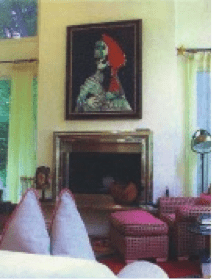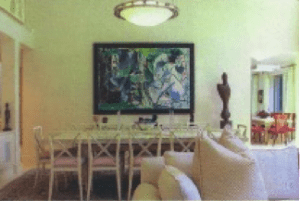Dear Gail…
“Eye on Design” Archive from Mann Report (Article By Gail Green)

With this issue we are starring a new format: question and answer. If there are specific questions you have relating to design, decoration or architecture, this is your forum. Please email your questions to: gegandco@aol.com.
Dear Gail: I just bought a home in Scarsdale, New York and I am not sure if l need to hire an architect, designer or decorator. Can you tell me the difference between the professions so that I can make an intelligent selection? –Scarsdale
Dear Scarsdale: As an interior designer, I am constantly asked how interior designers differ from decorators and architects, especially in New York where the differences can be so subtle, yet significant. Basically, DECORATORS deal with finishes and existing surfaces. They are concerned with aesthetics, style and mood. A decorator works only with surface decor such as paint, fabric, furnishings, decorative lighting and materials. INTERIOR DESIGNERS deal with form and function, space and aesthetics. They are professionally trained to create pleasing environments through interior space planning and manipulation. Qualified through education and experience, an interior designer can identity, research, and creatively resolve environmental issues. We can reconfigure interior space to make it workable, meeting the specific needs and wants of the client. ARCHITECTS deal with the structural aspects of a space. Like an interior designer, they mold and manipulate to create pleasing and well functioning spaces. The major differences between the interior designer and architect lies in the architect’s training, education and experience and in their ability to build from the ground up, creating new structures. The best professionals can blend, creating a work of art – inside and out.
Dear Gail: I have an extensive collection (mostly modern) and am currently renovating a new apartment in the city. How can I maintain the integrity of both the paintings and the environment in which they are to be placed? -Living With Art
Dear Living With Art: More than ever, a painting or sculpture’s backdrop is very significant in its performance as the frame against which its art is held. This background can be a wall, an opening, a table, airy space, whatever its context, it becomes meaningful and essential to the artistic expression. The meaning is the same – it is all about how it relates to the work of art. They function most successfully when they flatter each other. Although most art connoisseurs disclaim the importance of the background, the eye knows differently. That being said, pictures may be placed against walls, over fireplaces; they can be positioned on tables and floors, leaning against walls, and placed against upholstered panels. Art can become integrated onto the wall, by simply being painted directly there on.
Dear Gail: I have just moved into a modern apartment in the city, I have wide-open space which is both a Living Room and Dining Room area. How do you suggest I can make two distinct spaces of them both? -Open, But Close-Minded
Dear Open, But Close-Minded: Most developers would like to give the owner the decision how to use their public space; apartments generally come with undefined dining/living room areas. This nondescript space becomes a challenge to the interior designer or architect, who with the client, need to create distinct aesthetically pleasing yet well-functioning spaces. The most logical solution would be to do two things. Firstly, one can create an overhead boundary through the dropping of a ceiling or beam. The other solution involves designing a piece of furniture that acts as a mediator between the spaces, and allows for the space to remain light, airy, and open. For example, a two-sided buffer cabinet can serve both the living and dining room spaces by being placed between them as a buffer, albeit an aesthetic one.

*Note – Article adapted from print. Images reflect reduced quality.
Click here to view original print article.
____
Like this post?
Subscribe to our newsletter for more design tips, tricks and insights!


